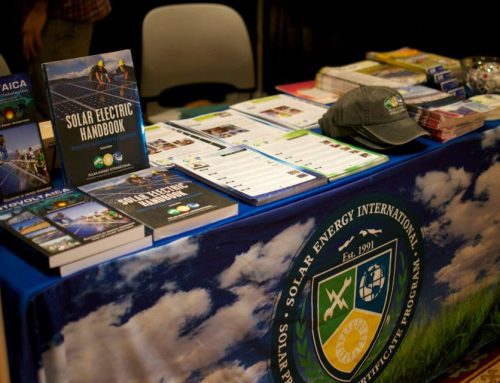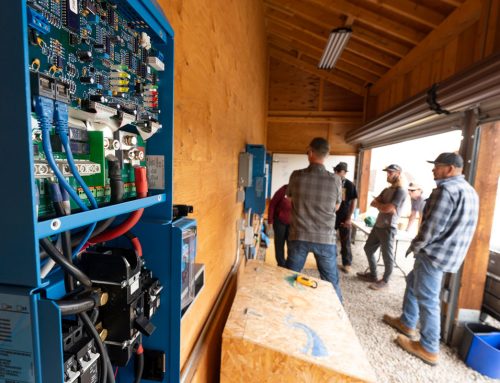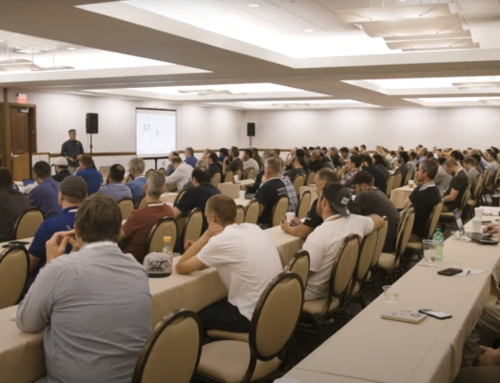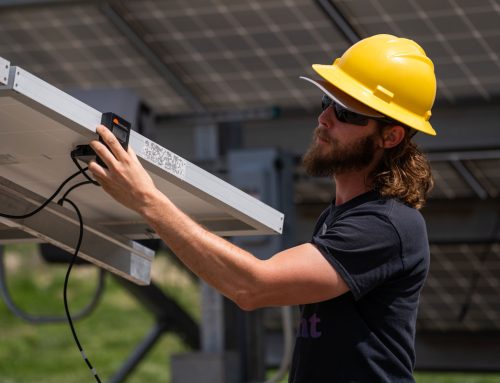In what has been called the most destructive Atlantic storm on record, Hurricane Maria devastated Puerto Rico this past fall leaving 3.4 million without electricity. Three months later, nearly half are still left without power, and rural communities in the mountainous regions of the island might be without power for many more months to come.
Solar Energy International (SEI) Instructor Chris Brooks and SEI Instructor And Curriculum Developer Karolina Fernandez traveled to Puerto Rico recently to work with an organization called Water Mission to address the ongoing electricity crisis in the region. Water Mission is a nonprofit engineering organization that designs, builds and implements safe water, sanitation and hygiene (WASH) solutions for people in developing countries and disaster areas. Water Mission designs customized solutions for each community they serve and focus on empowering the community and capacity building, as opposed to simply technology transfer.
We spoke with instructor Chris Brooks, who recapped the experience of working with renewable energy in Puerto Rico in the wake of Hurricane Maria:
The water crisis in Puerto Rico is unique because, in reality, it is an electricity crisis. Chris explained, “There is plenty of fresh drinking water all over the island…thousands of deep wells fitted with electric pumps,” He added, “The problem is that Hurricane Maria completely devastated the electrical grid. In many places it looked like King Kong walked down the street tearing utility poles out of the ground and scattering them about. There are huge tangles of wire everywhere. The rebuild of the electrical distribution system seems like a very daunting, expensive and long term project.”
According to Chris, Puerto Rico Water Mission has been working directly with FEMA (Federal Emergency Management Agency) and the EPA (Environmental Protection Agency) to address the water needs in over 200 rural communities in the mountainous regions of Puerto Rico. These are the communities that are at “the end of the line” and may be without water and electricity for many more months, while agencies focus first on more densely-populated areas.
Chris explains: “The quickest way to get many of these systems up and running was to disconnect the pumps from the defunct grid and hook up gasoline or diesel generators which were available in very limited supply.” He recalled, “Initially, Karo and I had the job of visiting the communities and wiring in generators wherever possible. These were considered temporary solutions (to get water running as soon as possible) as fuel was also in limited supply and expensive.”
At these sites, Chris and Karo also conducted feasibility studies for the installation of a PV system to replace the generators and power the existing pumps. Chris explained, “as we assessed the technical feasibility of installing a PV system, other Water Mission staff worked with the community to develop a plan for system sustainability.” He added, “ In other sites PV systems were installed immediately and as a temporary solution just to get the water running. These people had now gone months without running water. Modules were literally laid out in fields or on rooftops because no racking materials were available. Water Mission will be revisiting these sites to make the PV installations more permanent and safe as materials arrive on the island.”
According to Chris, Water Mission has a tremendous amount of experience with water filtration, purification and very small-scale, PV-direct pumping systems, but limited experience designing and building larger-scale arrays to power existing AC Pumps. Chris and Karo worked with Water Mission to develop a system design model and worked with the staff to better understand how to evaluate sites, choose components and safely install and operate the systems.
“We worked with local installers and contractors to specify and procure equipment,” Chris explained. “Some of the PV systems were connected directly to inverters (variable speed drives) to power the existing three-phase AC pumps. Others powered smaller, single phase pumps with AC coupled systems and Lithium Ion batteries.”
To learn more about water pumps and empowering communities facing environmental crises like Puerto Rico in the wake of Hurricane Maria, SEI offers RDOL101: Appropriate Technology for the Developing World online.
“Puerto Rico has a long road ahead and will face many challenges as it rebuilds its electrical grid. PV technology will definitely be part of the solution, and I would encourage SEI students and Alumni to support the ongoing efforts to provide the people of Puerto Rico with clean, sustainable and reliable solar energy,” Chris said.
SEI Professional Services (SEIPS) and SEI Engineering (SEIE) are extensions of Solar Energy International (SEI). SEI has a long and well respected heritage within the industry that dates back to 1991 as the leading non-profit technical training provider for the solar industry. SEIPS and SEIE were created in 2015 and 2016 respectively as a solar engineering and consulting company in response to the growing demand and requests from SEI’s 60,000+ students, alumni, supporters, and the broader solar industry to offer formal solar engineering, design, consulting, and field services across the globe. Visit: www.SEISolarPros.com





